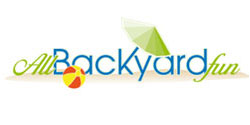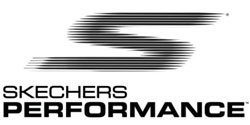News
News from Boulder, Colorado and Boulder Channel 1 News editors To advertise please call 303-447-8531
CU study: Bug-eyed lenses capture wide view with no distortion
May 1st
To create the innovative camera, which also allows for a practically infinite depth of field, the scientists used stretchable electronics and a pliable sheet of microlenses made from a material similar to that used for contact lenses. The researchers described the camera in an article published today in the journal Nature.
Conventional wide-angle lenses, such as fisheyes, distort the images they capture at the periphery, a consequence of the mismatch of light passing through a hemispherically curved surface of the lens only to be captured by the flat surface of the electronic detector.
For the digital camera described in the new study, the researchers were able to create an electronic detector that can be curved into the same hemispherical shape as the lens, eliminating the distortion.
“The most important and most revolutionizing part of this camera is to bend electronics onto a curved surface,” said Jianliang Xiao, assistant professor of mechanical engineering at CU-Boulder and co-lead author of the study. “Electronics are all made of silicon, mostly, and silicon is very brittle, so you can’t deform the silicon. Here, by using stretchable electronics we can deform the system; we can put it onto a curved surface.”
Creating a camera inspired by the compound eyes of arthropods — animals with exoskeletons and jointed legs, including all insects as well as scorpions, spiders, lobsters and centipedes, among other creatures — has been a sought-after goal. Compound eyes typically have a lower resolution than the eyes of mammals, but they give arthropods a much larger field of view than mammalian eyes as well as high sensitivity to motion and an infinite depth of field.
Compound eyes consist of a collection of smaller eyes called ommatidia, and each small eye is made up of an independent corneal lens as well as a crystalline cone, which captures the light traveling through the lens. The number of ommatidia determines the resolution and varies widely among arthropods. Dragonflies, for example, have about 28,000 tiny eyes while worker ants have only in the neighborhood of 100.
Imitating the corneal lens-crystalline cone pairings, the camera created by Xiao and his colleagues has 180 miniature lenses, each of which is backed with its own small electronic detector. The number of lenses used in the camera is similar to the number of ommatidia in the compound eyes of fire ants and bark beetles.
The electronics and the lenses are both flat when fabricated, said Xiao, who began working on the project as a postdoctoral researcher in John Roger’s lab at the University of Illinois at Urbana-Champaign. This allows the product to be manufactured using conventional systems.
“This is the key to our technology,” Xiao said. “We can fabricate an electronic system that is compatible with current technology. Then we can scale it up.”
The lens sheet and the electronics sheet are integrated together while flat and then molded into a hemispherical shape afterward. Each individual electronic detector and each individual lens do not deform, but the spaces between the detectors and lenses can stretch and allow for the creation of a new 3-D shape. The electronic detectors are all attached with serpentine filament bridges, which are not compromised as the material stretches and bends.
In the pictures taken by the new camera, each lens-detector pairing contributes a single pixel to the image. Moving the electronic detectors directly behind the lenses — instead of having just one detector sitting farther behind a single lens, as in conventional cameras — creates a very short focal length, which allows for the near-infinite depth of field.
The new paper demonstrates that stretchable electronics can be used as the foundation for a distortion-free hemispherical camera, but commercial production of such a camera may still be years away, Xiao said.
The three other co-lead authors of the paper are Young Min Song, Yizhu Xie and Viktor Malyarchuk, all of the University of Illinois. Other co-authors are Ki-Joong Choi, Rak-Hwan Kim and John Rogers, also of Illinois; Inhwa Jung, of Kyung Hee University in Korea; Zhuangjian Liu, of the Institute of High Performance Computing A*star in Singapore; Chaofeng Lu, of Zhejiang University in China and Northwestern University; Rui Li, of Dalian University of Technology in China; Kenneth Crozier, of Harvard University; and Yonggang Huang, of Northwestern University.
The research was funded by the Defense Advanced Research Projects Agency and the National Science Foundation.
CU news release
[includeme src=”http://c1n.tv/boulder/media/bouldersponsors.html” frameborder=”0″ width=”670″ height=”300″]
Fraudulent website for Parks and Recreation gathering personal information for resale
Apr 25th
The City of Boulder Parks and Recreation Department was notified by the Colorado Parks and Recreation Association (CPRA) that there is a possible fraudulent website offering registration for some Boulder Parks and Recreation activities and classes. Findsportsnow.com, is believed to be posting city programs and offering registration through their site, however, the city has no business relationship or agreements with this entity.
Area residents should visit www.BoulderParks-Rec.org or contact a city recreation center for program and registration links and information.
According to a memo from CPRA to parks and recreation departments around Colorado this week, the website “Findsportsnow.com has been listing several park and recreation agency programs, claiming to be a ‘one stop shop’ for registering for these sports programs. They are collecting personal information, including credit card numbers and charging a $2 ‘processing fee’ for each transaction. Their website claims they are then passing along this registration information to the host agency. THIS has NOT been the case in three instances we are aware of! Several of our CPRA Agencies have been notified by customers that they had registered through this website, only to find out they had been scammed.”
If you believe you may have registered for a City of Boulder recreation program through this website, please contact us. For more information call 303-413-7270.
CITY OF BOULDER NEWS RELEASE
[includeme src=”http://c1n.tv/boulder/media/bouldersponsors.html” frameborder=”0″ width=”670″ height=”300″]
As the planet warms faster, more species will be increasingly at risk
Apr 21st
The acceleration of change means that the species inhabiting each zone have less time to adapt to the climatic changes, said lead author Irina Mahlstein, a CIRES scientist who works at NOAA’s Earth System Research Laboratory in Boulder, Colo. “The warmer the climate gets, the faster the climate zones are shifting. This could make it harder for plants and animals to adjust.”
The study is the first to look at the accelerating pace of the shifting of climate zones, which are areas of the Earth defined by annual and seasonal cycles of temperature and precipitation, as well as temperature and precipitation thresholds of plant species. Over 30 different climate zones are found on Earth; examples include the equatorial monsoonal zone, the polar tundra zone and cold arid desert zone.
“A shift in the climate zone is probably a better measure of ‘reality’ for living systems, more so than changing temperature by a degree or precipitation by a centimeter,” said Mahlstein.
The scientists used climate model simulations and a well-known ecosystem classification scheme to look at the shifts between climate zones over a two-century period, 1900 to 2098. The team found that for an initial 3.6 degrees Fahrenheit of warming, about 5 percent of Earth’s land area shifts to a new climate zone.
The models show that the pace of change quickens for the next 3.6 F of warming as an additional 10 percent of the land area shifts to a new climate zone. The paper was published online in the journal Nature Climate Change on April 21.
Certain regions of the globe, such as northern middle and high latitudes, will undergo more changes than other regions, such as the tropics, the scientists found. In the tropics, mountainous regions will experience bigger changes than low-altitude areas.
In the coming century, the findings suggest that frost climates — the coldest climate zone of the planet — will largely decrease. In general, dry regions in different areas of the globe will increase, and a large fraction of land area will change from cool summers to hot summers, according to the study.
The scientists also investigated whether temperature or precipitation had a greater impact on how much of the land area changed zones. “We found that temperature is the main factor, at least through the end of this century,” said Mahlstein.
John Daniel at the NOAA Earth System Research Laboratory and Susan Solomon at the Massachusetts Institute of Technology co-authored the study.
-CU press release
[includeme src=”http://c1n.tv/boulder/media/bouldersponsors.html” frameborder=”0″ width=”670″ height=”300″]























